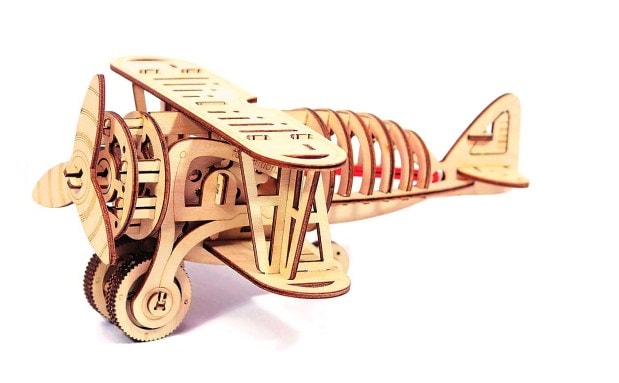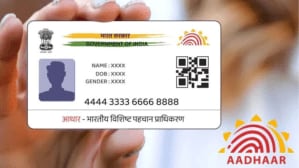ImagiMake’s Tales of Ramayana isn’t just a board game, it’s an immersive journey across the Indian subcontinent, following Lord Rama’s footsteps. Children roll the dice, draw strategy cards, collect weapons and make decisions that shape the narrative as they retrace the epic journey. They encounter mythological characters, geography-based challenges, and moral dilemmas. The game blends storytelling with spatial mapping, helping kids understand culture, consequences, and collaboration, all while playing with siblings or parents.
Toys are no longer things that rattle, beep, or glow. They are tools that teach. Art kits that explain folk art. Wooden cars that move without glue, powered by a child’s mechanical instinct. As families grow more intentional about the ways their children play, some toy makers are making a brave attempt to steal attention away from the screens and offer products that stimulate real-world learning.
Platforms like Flipkart have observed a sharp spike, over 89% year-on-year growth, in categories like STEM toys, building blocks, and craft kits. Indian consumers, the platform notes, are increasingly choosing Make-in-India toys that are safe, developmentally rich, and interactive. These toys enhance children’s motor skills, creativity, design thinking, and problem-solving abilities, delivering value well beyond entertainment.
Except for Lego and mechanical engineering sets, the toys available 10 years ago had one clear purpose, i.e. distraction. With new-age toys, children are far more engaged. Imagimake’s patented quilling toy is one example. All a child needs is paper and their glue-gun-shaped quill-maker to create vibrant designs, flower baskets, butterflies, or anything their imagination conjures. It builds fine motor skills, sequencing, and patience, without a screen in sight. Similarly, with Funvention’s DIY car set, children read the manual, assemble the wooden parts, and then play with the finished car. The process itself becomes the play.

This pivot toward meaningful, mindful play aligns with a broader shift in policy. Since 2020, India has imposed one of the world’s most stringent toy safety frameworks. All toys must now comply with seven Indian Standards and bear the ISI mark. Toys that don’t meet these standards can’t be manufactured, stored, or sold. As of early 2025, 1,640 toy manufacturers in India are BIS-certified, including 475 making electronic toys.
The regulatory changes have also reshaped trade dynamics. Imports fell from $129.6 million in FY20 to $73.9 million in FY25, while exports rose to $169.4 million, up from $141 million in FY21. China’s share of toy imports has dropped from 87% in FY19 to 64% in FY24, with ASEAN countries, Sri Lanka, and the Czech Republic filling the gap. But beyond trade realignment, the bigger story is the rise of homegrown design.
Beyond entertainment
For Pune-based Funvention, every toy is a tactile classroom. Their spinning tops double as return gifts, while their chess boards and garden irrigation kits bring science, strategy, and real-world logic into play. The Garden Irrigation Kit mimics a drip system. Children assemble tubes and valves, experiment with water flow, and understand basic environmental engineering, developing logic, coordination, and scientific inquiry while playing.
In Mumbai, Imagimake’s design philosophy sits at the crossroads of development and storytelling. Co-founders Disha Katharani and Ravi Kumar started it after working with NGOs like Pratham. “We saw a gap between entertainment and development, especially for middle-class families,” says Katharani. Today, their toys are sold in over 20 countries.
Every product is mapped against their ‘Development Universe’, a framework that aligns playtime with age-wise cognitive, motor, social, and emotional goals. Their Mission Chandrayaan kit, made in collaboration with Isro, teaches space science through tactile construction. The Mapology series makes Indian geography fun. And their newly launched board game, Tales of Ramayana, is a quiet revolution that allows children to retrace Lord Rama’s journey across India using cards, challenges, and dice.
“Play is a powerful way to build identity,” says Katharani. “When children see their own stories reflected in toys, they engage more deeply, not just cognitively, but emotionally and culturally.”
Other emerging brands are taking similar cues. Mr Blox, started two years ago, builds block-like toys for early learners, including fidget-friendly designs for neurodiverse children. Their products are made in India, with only select components sourced globally. For co-founder Neil Vira, play is about inclusion and accessibility, not just in price, but in how toys engage different learning needs.
Legacy brands are also taking note. LEGO India recently launched its first certified store in Gurugram, drawing over 100,000 visitors in its opening month. “Indian families are ready for experiences that go beyond the product, ones that celebrate creativity and community,” says Bhavana Mandon, country manager. LEGO is also working with the Centre for Development of Advanced Computing (C-DAC) under the Ministry of Electronics and Information Technology (MeitY) to help upskill Indian toy designers, as part of the National Action Plan for Toys.
Why toys matter
“Toys are not optional,” says Dr Kamna Chhibber, head of mental health at Fortis Healthcare, adding: “They are central to how children develop cognitively, emotionally, and socially.”
Dr Chhibber stresses the importance of open-ended play. “The most effective toys engage the whole child, not just their intellect, but their imagination and self-expression,” she says. “When used mindfully, educational toys can build attention and confidence. But when they’re too direct or tech-heavy, they may limit creativity,” she adds, warning against the unchecked rise of digital toys. “Tech-integrated puzzles or AR-based toys can enhance learning if used with parental guidance, but without moderation, they risk reinforcing passive digital habits,” she explains, adding: “The key is balance.”
This rethinking of play gained momentum during the pandemic. “With schools closed and screen fatigue high, parents actively looked for toys that could teach, comfort, and entertain,” says Katharani. “That mindset shift hasn’t reversed. If anything, it’s grown stronger.”
The road ahead
Despite optimism, India’s toy industry still faces structural challenges. Raw material inputs, such as magnets, motors, and decorative components, are often imported due to domestic unavailability. In FY24, India imported $137.2 million worth of toy components, even though finished toy imports have reduced significantly.
There are also gaps in local supply chains. “Building a global-grade toy brand in India means solving for quality, cost, and creativity all at once,” says Kumar. Imagimake, for instance, holds utility patents in both India and the US, but scaling such design excellence is still not easy across the sector. Yet the intent is clear. India’s toy sector, now valued at $3 billion, is no longer content with low-cost mass production. It is moving, slowly but surely, toward high-engagement, development-led products that balance fun with meaning.
Compared to China’s $100 billion toy empire, India remains modest, but focused. More than 100 MSMEs participated in the most recent Toy Expo, and initiatives like E-Toycathon, supported by MeitY, are helping young engineers and entrepreneurs bring new ideas to market.







